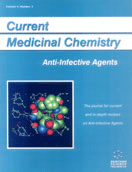Abstract
The design and development of antiviral agents are an urgent need. The continuing problem associated with the emergence of drug resistant strains stimulates for new compounds for the treatment of both chronic diseases and acute infections. A large number of arylsulphones have been reported to show potent antiviral activity. Although they have a common chemical feature, an aromatic heterocycle bearing a sulphonyl moiety, their antiviral actions are very different. Some Nsulphonyl benzimidazoles display strong antirhinovirus efficacy and good bioavailability; others inhibit HCMV and VZV at micromolar concentrations. A wide variety of arylsulphones, endowed with potent anti-HIV activity, were subjected to diverse chemical modifications to optimize their potential. Among the first representative compounds of this class, 2-nitrophenyl phenylsulphone was selected as prototype for additional studies. The replacement of the benzene ring with heterocycles led to several pyrrolyl and indolyl sulphones, some of them showed an anti-HIV-1 activity in the low nanomolar range. Moreover various cyclic systems where the sulphonyl moiety is part of the ring were found to be strong inhibitors of HIV-1.
Keywords: arylsulphones, antiviral activity, hiv-1 reverse transcriptase inhibitors, structure-activity relationships, benzimidazole, indole, pyrrole
 3
3

